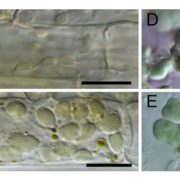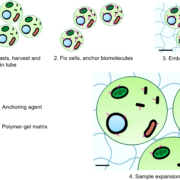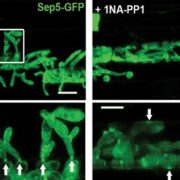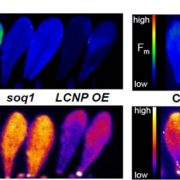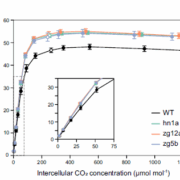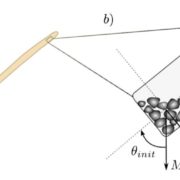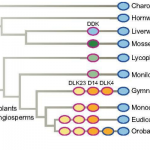A Rubisco-binding protein is required for normal pyrenoid number and starch sheath morphology in Chlamydomonas reinhardtii (PNAS)
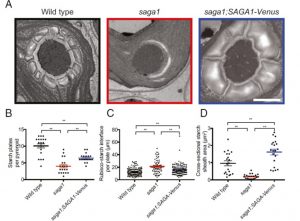 In most eukaryotic algae, carbon fixation takes place in an organelle within an organelle, the pyrenoid inside of the chloroplast. Besides being functionally very important, pyrenoids are interesting because they are what is called a phase-separated structure, that is they are not membrane enclosed; rather, they are usually surrounded by starch granules known as starch plates. Itakura et al. identified a Chlamydomonas mutant that forms multiple, abnormal pyrenoids, enclosed in abnormal starch plates. They found that the protein affected in this mutant, SAGA1, is a starch- and Rubisco-binding protein. Based on this and other work, the authors propose a model in which SAGA1 affects starch plate formation, and when the surface area determined by starch plates is excessive, the pyrenoid forms as multiple structures. They also suggest that surface area may be important in morphology of other phase-separated organelles. (Summary by Mary Williams) Proc. Natl. Acad. Sci. USA 10.1073/pnas.1904587116
In most eukaryotic algae, carbon fixation takes place in an organelle within an organelle, the pyrenoid inside of the chloroplast. Besides being functionally very important, pyrenoids are interesting because they are what is called a phase-separated structure, that is they are not membrane enclosed; rather, they are usually surrounded by starch granules known as starch plates. Itakura et al. identified a Chlamydomonas mutant that forms multiple, abnormal pyrenoids, enclosed in abnormal starch plates. They found that the protein affected in this mutant, SAGA1, is a starch- and Rubisco-binding protein. Based on this and other work, the authors propose a model in which SAGA1 affects starch plate formation, and when the surface area determined by starch plates is excessive, the pyrenoid forms as multiple structures. They also suggest that surface area may be important in morphology of other phase-separated organelles. (Summary by Mary Williams) Proc. Natl. Acad. Sci. USA 10.1073/pnas.1904587116


